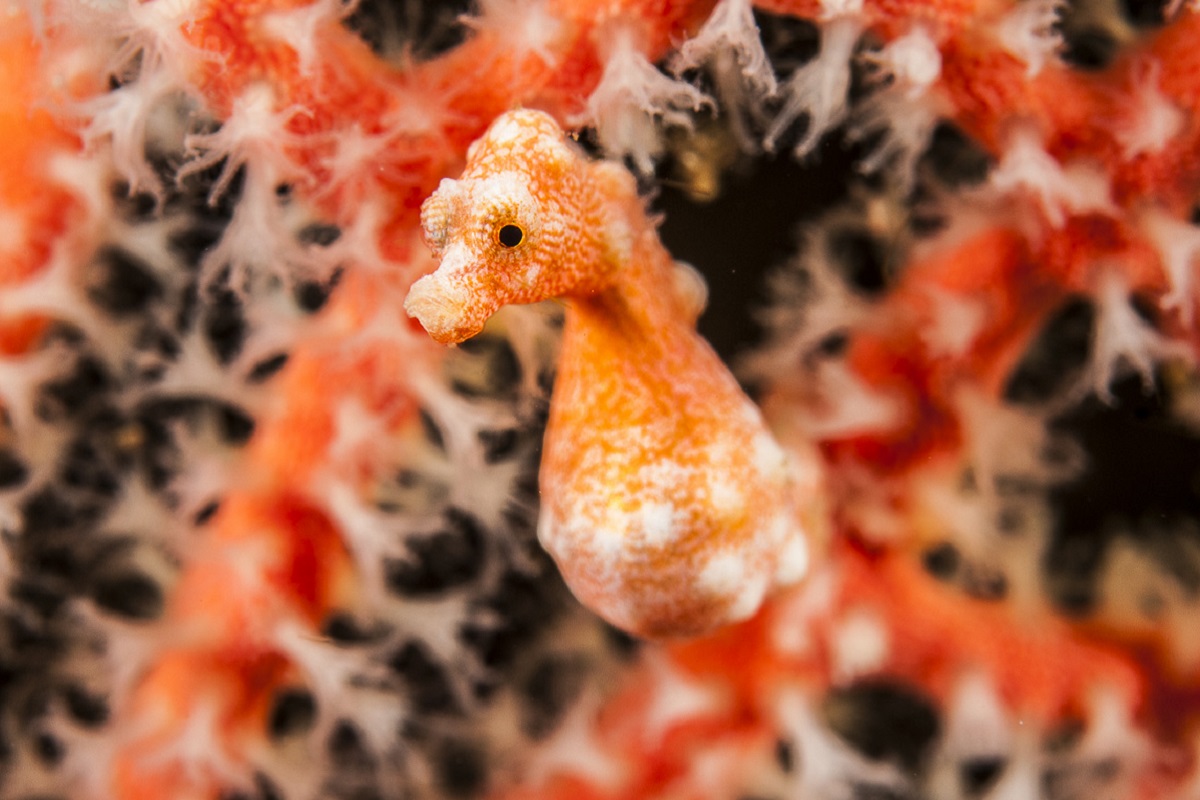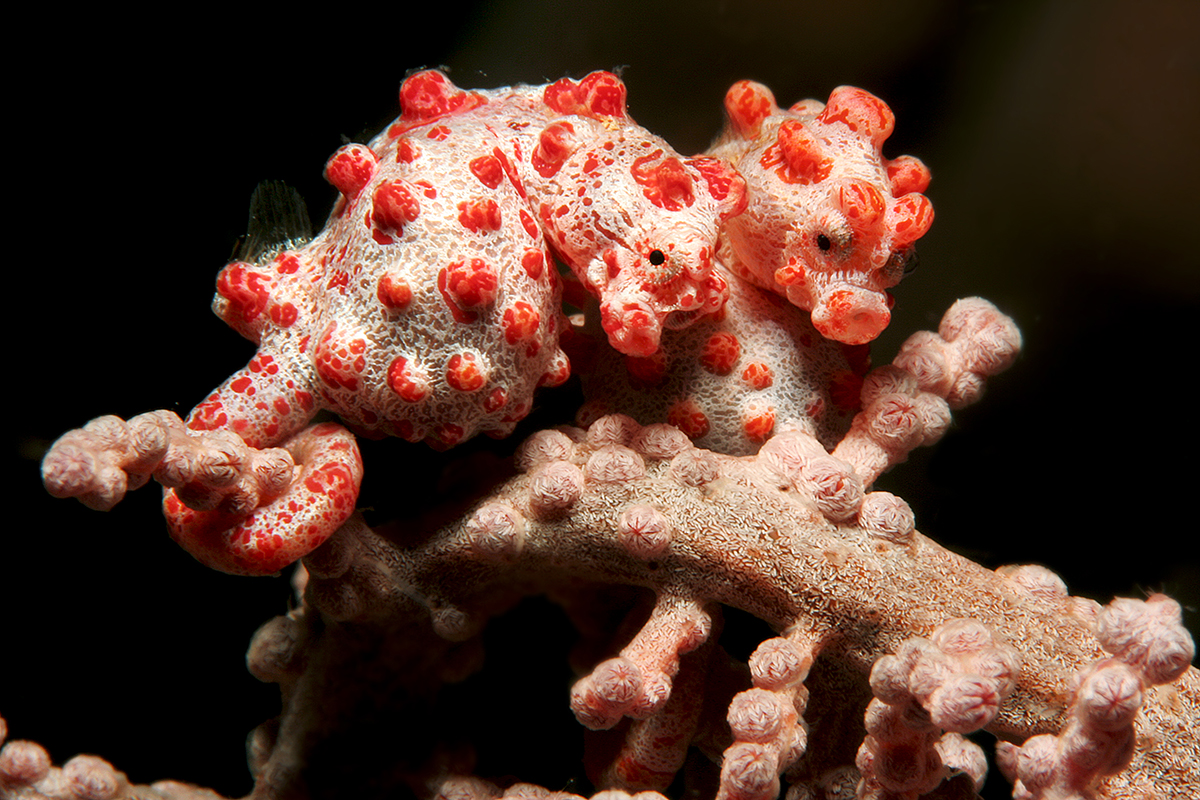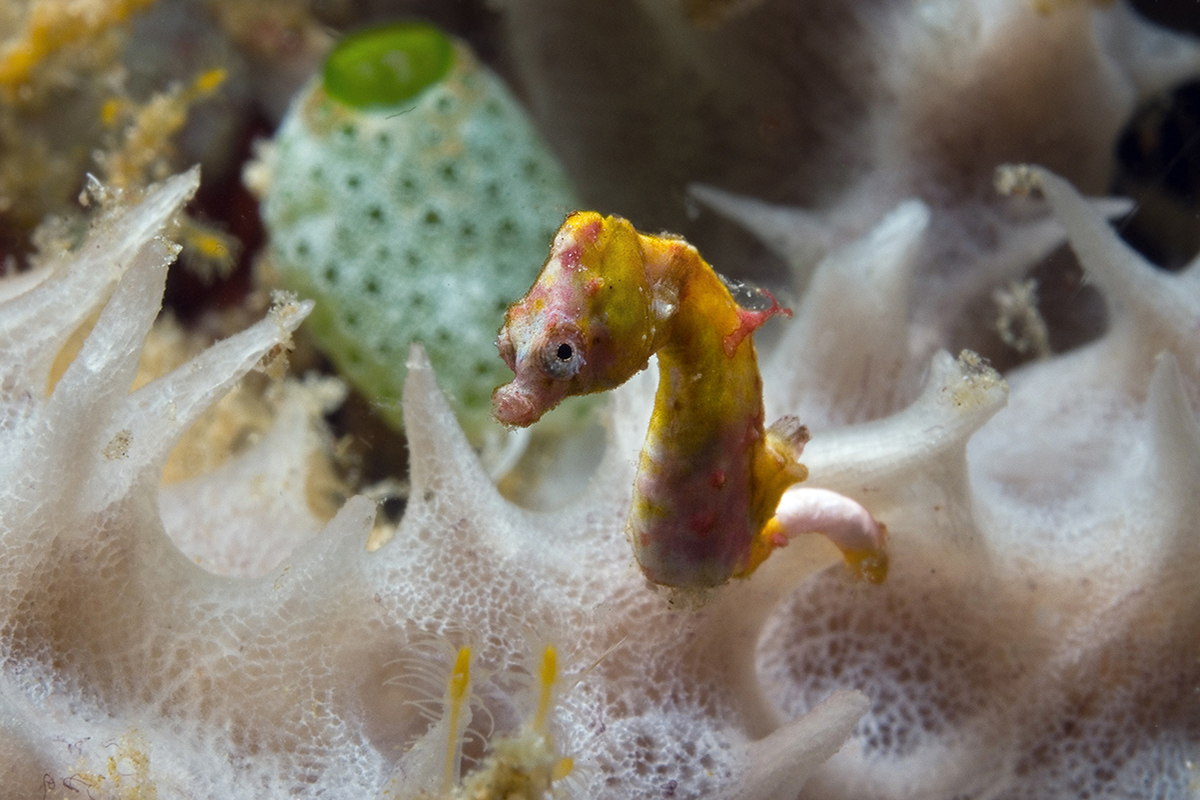Meet the Pygmy Seahorses of Raja Ampat
No dive trip to Raja Ampat is complete without hunting for the plethora of pygmy seahorses that reside in the region. These minute fish are so unique in looks, the way they move through the water, and their behaviours, it is almost unbelievable that they are real. Raja Ampat has amongst the highest recorded density of pygmy seahorses in the world, so it really is the perfect place to meet them. Read on to find out all the weird and wonderful things about the pygmy seahorses of Raja Ampat.
The 4 species of Pygmy Seahorse in Raja Ampat
There are 4 distinct species of pygmy seahorse that you will find in the region. The very first to be discovered was Bargibant’s pygmy (Hippocampus bargibanti). This species live only in and around Muricella gorgonians. They are covered in tiny bumps that mimic the gorgonian’s polyps, which is actually how they were accidentally discovered by researcher Georges Bargibant around 1970. While collecting a gorgonian fan for his research he also picked up a pair of these lovely little seahorses as well.
Another species of pygmy seahorse that lives in gorgonian fans is Denise’s pygmy (Hippocampus denise). This species is closely related to the Bargibant’s pygmy but is slenderer with a longer snout. They also vary in colour and texture much more than the Bargibant’s because they live in a variety of gorgonians. They come in a whole range of pinks, reds, yellows, and white. There is also a very rare red coloured Denise’s pygmy that lives only in Melithaea gorgonians.
Pontoh’s pygmy seahorse (Hippocampus pontoh) is not uncommon in the Raja Ampat region. It is sometimes called the weedy pygmy seahorse thanks to its love of hanging out in Halimeda seaweed meadows. It grows to approximately 1.7cm long, making it one of the smallest of the Raja Ampat pygmy seahorses. They range from yellow, to pinkish, and usually have some thin red lines on their heads or backsides of their bodies.
The least common of all the pygmy seahorses in Raja Ampat is Satomi’s pygmy (Hippocampus satomiae). This tiny species is the smallest in the region and grows to no more than 1cm in length. Because of its rarity and difficulty to spot, there is not a lot known about it. They are usually less colourful than the other species, ranging from beige to dark brown and tend to live deeper than other pygmys. Researchers say they are usually busier at dusk and are very active swimmers.
Pygmy seahorse behaviour
One of the most incredible things about pygmy seahorses is their mating and parenting behaviour. Firstly, they are thought to be monogamous, and it is actually the males that carry the eggs which are transferred from the female during mating. The eggs are fertilized in a pouch on the underside of his belly that can carry around 10-20 eggs at a time. The gestation period is about 2 weeks, after which the minute babies hatch out of his pouch. There aren’t many super dads like this in nature!
Pygmy seahorses thrive in Raja Ampat thanks to the plentiful food and pristine habitats. It takes sharp eyes and determination to see them but it’s incredible when you do! Would you like to hunt out these tiny creatures on a dive trip in Raja Ampat? Let us know in the comments below if you would.



